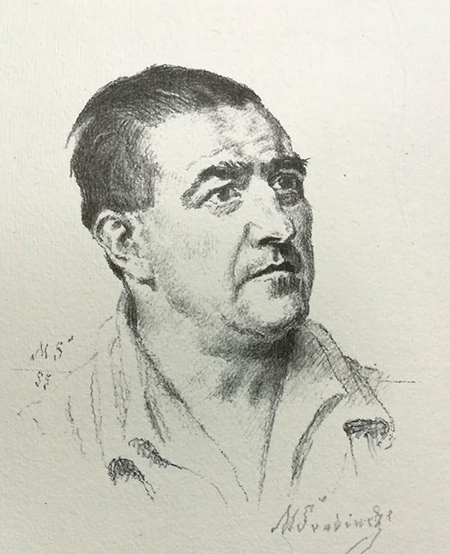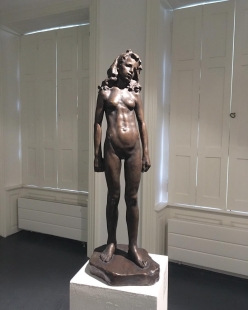
Jan Štursa – one of the founders of Czech modern sculpture
 |
Originally, Jan Štursa, born on May 15, 1880, in Nové Město na Moravě, wanted to become a gardener, while his father wished for him to be a tailor. In the end, both succumbed to the urging of Jan's drawing teacher, who insisted that the exceptionally talented young man should attend the stone carving school in Hořice.
Štursa continued his studies with Josef Václav Myslbek at the Academy of Fine Arts (AVU) in Prague. A short military deployment on the front in Galicia inspired him to create sculptures depicting human suffering, and otherwise, women were often the muse of the leading representative of Czech secession. "He could beautifully create women; his realism was outstanding," evaluates art historian Jitka Nováková.
Štursa, who was the rector of AVU for two years in the 1920s, also carved monuments and architectural embellishments – for example, for Hlávkův Bridge in Prague, the memorial at Vítkov, and the Legiobanka building.
Like most of his contemporaries at the turn of the 19th and 20th centuries, surprisingly, Štursa was apparently not greatly influenced by the French genius of modern sculpture, Auguste Rodin, whose exhibition in Prague in 1902 caused a true stir among Czech artistic circles. "Surprisingly, Štursa did not have a significant relationship with this archetype of contemporary Czech sculpture," wrote art historian Petr Wittlich. "He was a true type of a creative artist."
In the last years of his life, he focused mainly on portraiture, masterfully depicting figures like Tomáš Garrigue Masaryk, Alois Jirásek, and Božena Němcová.
At the end of April 1925, Štursa participated in the placement of his sculpture Gift of Heaven and Earth in the Modern Gallery in Prague's Stromovka. Subsequently, plagued by painful symptoms of developing syphilis, he returned to his studio at the Academy, where he shot himself and died from the injuries on May 2, 1925. "The greatest poet of Czech sculpture" was buried with full honors on May 5, 1925, at Slavín in the Vyšehrad Cemetery.
The English translation is powered by AI tool. Switch to Czech to view the original text source.




0 comments
add comment











